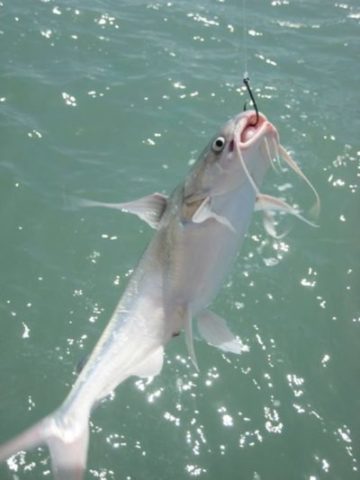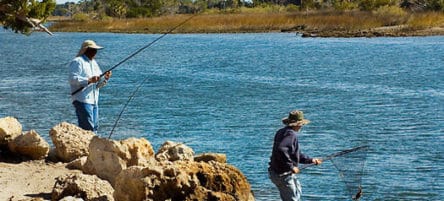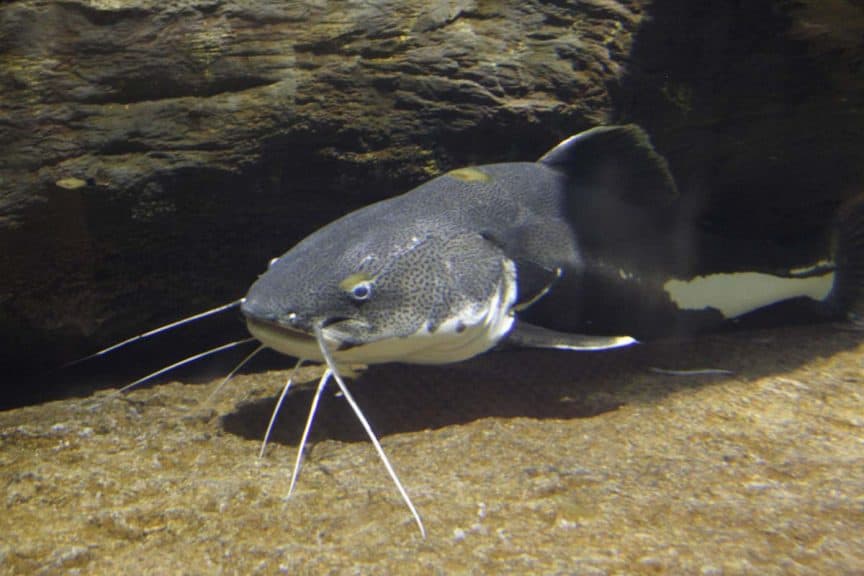Anglers that fish from the shore at times suffer from an inferiority complex though many of them know very well how to catch Catfish. Regardless of how big the catfish is or how many catfish they catch, the doubt that they could have managed to get more if they had a boat certainly nags them. The truth is bank anglers can equally catch as many fish just like guys in boats. There’s no doubt about that.

Catching Catfish
One of the keys to shoreline fishing success is mobility. Knowledge of species, as well as a deeper understanding of near-shore topography, are the other two things you need to know. If you ignore any of these three factors, your chances of success will fade drastically.
The maiden step towards clobbering cats from the comfort of a lake’s shore is to establish feeding preferences and patterns of a catfish species. If you do not understand what every species feeds and moves, you’ll have such a difficult time catching them. Flatheads, blues, and channel cats are different in their behavior just like horses, pigs, and goats. Consequently, you need to match the time of the year and species with the precise location you intend to fish.
For example, for the blue catfish, the best time to catch them is in the winter. Some winter fishing tips may be helpful for the new guys. A cold snap not only causes mortality but it can also put thermal stress on the forage fish. If the weather warms up a lit bit, a steady wind will push dead shad along points or into shallow bays. You can take advantage of the big blues that move into these areas to eat dead shad. To cast further, it’s wise to use long rods. It’s also prudent to try different positions, different casting distances, and different depths to discover where the blue cats are feeding on a certain day.
How To Catch Catfish In A Lake From The Bank
It’s prudent to fish for catfish in natural lakes compared to man-made ones. Often, the size of the lake determines whether you can fish from the bank or use a boat to do your fishing. Therefore, once you have all the facts, you need to equip yourself accordingly.
The mistake many people make is assuming that the fact that lakes are land-locked, all of them are freshwater. This couldn’t be further from the truth. Saltwater lakes also do exist.
Here are some of the things you must have if your catfish fishing expedition is to be a success:
Catfish Fishing Baits
Did you know that catfish are opportunists? Whether you utilize sunfish, bream, shad, or minnows, there’s no doubt that catfish will consume the food that’s natural to that specific lake.
However, channel catfish eat any type of bait – even the stinkiest of them all. Stink baits and chicken livers seem to work wonders when hunting for channel catfish.
The blue catfish, on the other hand, are into the cut bait. Flatheads are notorious when it comes to eating live bait.
Catfish Fishing Rigs
The rigs to use depend on your catfish fishing method. Many catfish anglers prefer the Carolina rig. You can use this impressive rig whether you’re fishing from the bank or boat.
The other common rig is the Santee rig. You need to attach a peg float to your line in order to ensure the bait is right off the bottom. You can also use this rig when fishing from the bank or a boat. The rig is not the most important thing when catching trout or catfish or something else.
Catfish Fishing Tackle
The fishing tackle depends on your prospective catfish’s size. For instance, a medium action reel/rod combo spooled with 15 – 20 lb. line is an excellent place to begin when in the hunt for a catfish. If you’re an advanced catfisherman, it’s prudent to go heavier with fishing lines and rods. This is especially true if you’re targeting trophy catfish.
How To Catch
A slip-sinker rig is a popular set-up due to the fact that the catfish are located near the bottom, often. You can make it by threading a sinker at the mainline and then a bead.
Once you do that, you have to tie the main line to one end of your swivel. On the other end, you have a 1 – 2-foot monofilament leader which is followed by the hook. You can leave the rig on the bottom or hovering above the floor whenever you’re drifting an area.
The other option you can use is a float rig. All you need to do is add a float right on top of the weight on the slip-sinker rig. Utilize the rig to drift bait gradually through wood-rich catfish lairs.
Alternatively, you can do so over weed without having to snag in cover or on the bottom. Drifting afloat is also handy at covering water from the bank.
The other way you can catch catfish is by using a jig head that’s tipped with bait. Just lift and drop your jig along the bottom. Sometimes, holding it still will result in a bite.
Of great importance to note is that some catfish normally hit quick and hard. Other times, they usually play with your bait before grabbing it fully. Anytime you’re in doubt, you need to set the hook.
A very common rig-fishing strategy is to feed line into a nibbling catfish. That way, it’ll not feel the resistance. Whenever the fish takes line steadily, then just know it’s hook-set time.
How To Catch Catfish From A Boat
The Spot
Before you go to catch catfish from your boat, you need to check current-generation predictions. It’s very important that you learn the specific water-release rates that work best.
After that, you need to focus on likely areas with your map. Check for things such as creek channels that drop off to the main lake or elevated offshore flats. To increase your chances of success for catfish fishing, you need to fish around 18 – 25 deep feet. A GPS fish finder combo can help you a lot for the information.
Are you fishing for blues? Try your luck on mussel-shell bottoms.
The Drift
It’s recommended that you use two rods. Cast your rigs just ahead of you. Allow them to sink into the bottom. Once you do that, reel in two turns of line. After that, keep your boat’s nose into the wind with your paddle and begin drifting backward. Hold your rods horizontally to the surface of the water. Everything can be easier by mounting a trolling motor on your boat.
Note: You should avoid drifting too fast as it decreases your chances of catching catfish.
The Fight
It’s important to note that catfish hit hard. This is especially true when it comes to big blues. The best thing is to be patient. Allow the circle hook to work its magic.
The fact that catfish might weigh roughly 2/3 thirds or even more of what your boat weighs, they’ll have a tendency of pulling you around once they’re hooked.
To be on the safe side, you need to drag off whenever you get your target near the surface. If your boat is small, you need to act fast since the big ones surge whenever they see your boat and can flip your small boat in a hurry.
Tips To Guarantee Catfish Fishing Success
If you employ the following tips when fishing for catfish, you’re guaranteed of utmost success:
- Always use the right bait – Use fish baits if you’re targeting heavyweights. You can purchase some like goldfish and minnows at bait shops. You can use good minnow traps or crawfish traps to have sufficient live baits.
- Always leave your hook points exposed – You need to fish with your hook’s barb exposed. This way, you’ll rake in plenty of fish.
- Fishing year-round is magical – Certainly, summer is a highly productive catfish fishing season. However, to catch more cats, you need not to ignore other incredible fishing opportunities that are available in winter, fall, and spring.
- Always understand the weather effects – There’s nothing that intensely affects the feeding activity of catfish than a speedy change of weather. The bite gets dramatically worse or better, depending on weather conditions.
- Always channel your efforts – Catfishing on channels and edges dramatically improves your catch throughout the year.
- Be patient – If you’re to be successful in catfish catching, you need to sit, wait, and hook. Patience is key.
- Try fishing in the morning – You can catch fish round the clock in discolored or muddy waters. When fishing in clear waters, you’ll notice a huge drop in feeding activity especially on clear days whenever the sun appears high in the sky.
In Summary …
Catfish make for an exciting target when fishing streams, rivers, and lakes. The whiskered fish have a tendency to migrate right into deep holes during the winter and fall months.
You can find them moving downstream to their holding lies in the summer months or even upstream as they look for shad to eat. They not only boast excellent eyesight but also an amazing sense of smell which they utilize to locate and attack their prey.
One of the ways of how to catch catfish is to know their movement. Homemade catfish baits can be useful. In addition to that, apply all the strategies highlighted above. By doing that, you’ll certainly enjoy success in your quest to catch catfish.



